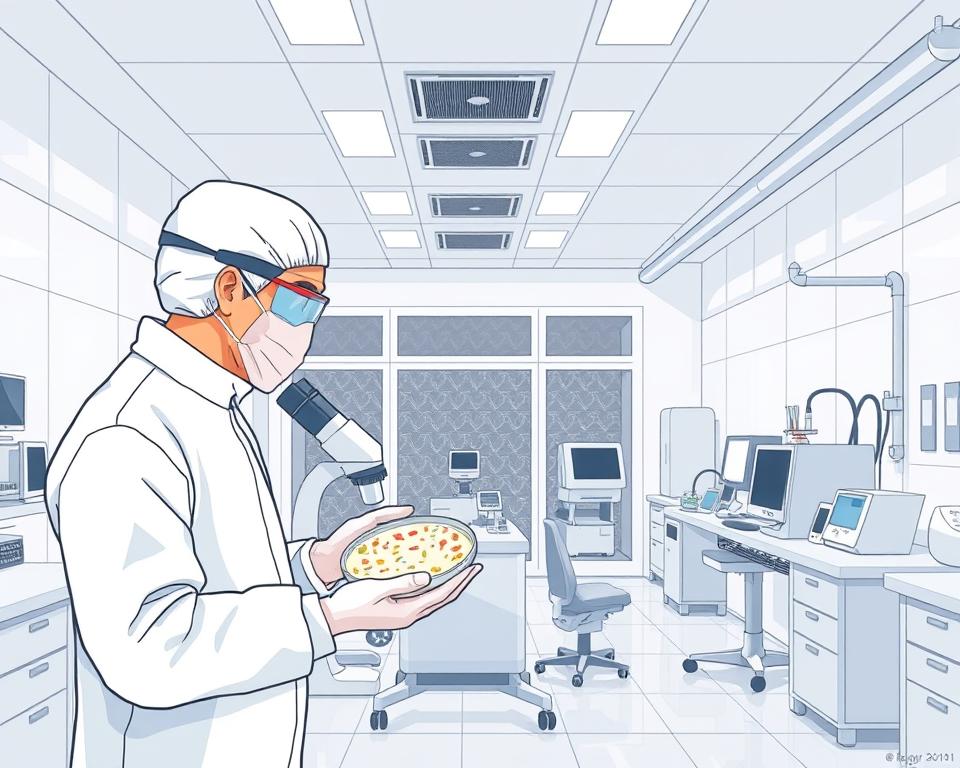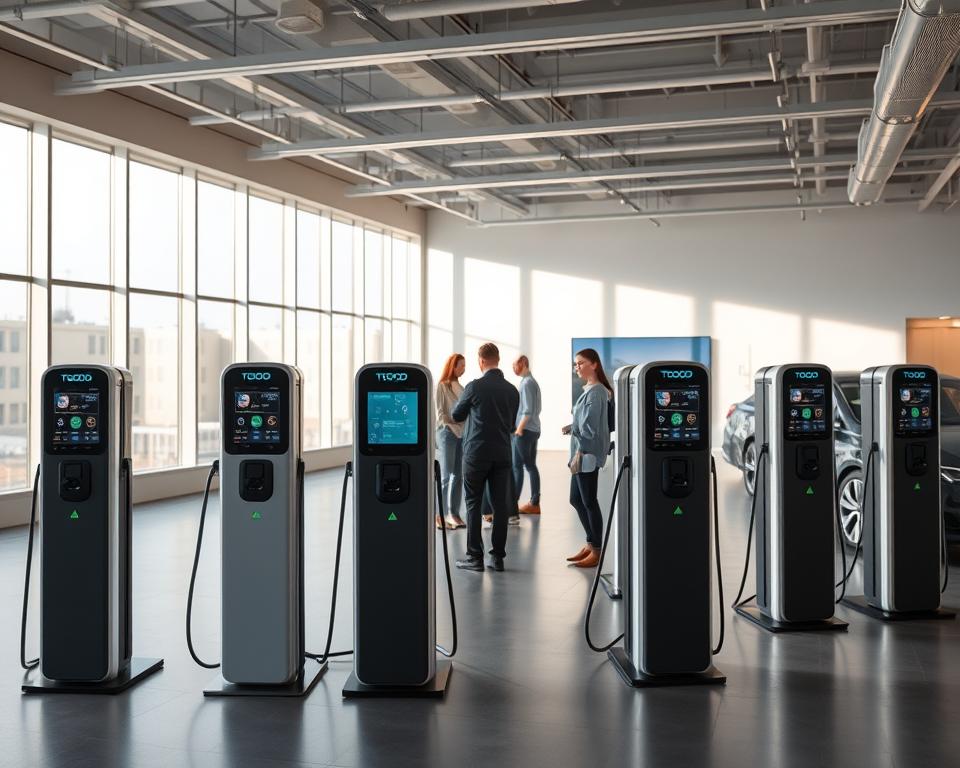Advanced Clean Room Manufacturing for Medical Devices by AMT in Singapore
Nearly 70% of medical device contamination stems from the assembly or transportation process. This demonstrates how crucial cleanroom assembly is for patient safety and product approval.
With more than three decades of expertise in medical clean room assembly by AMT, AMT Medical Clean Room Assembly Services is a key player in Singapore. They have around 350 employees and cater to more than 30 countries. This makes Singapore as a central hub for medical clean room construction and precise assembly work.
AMT is certified in ISO 13485, ISO 9001, and IATF 16949. They utilize stringent quality systems to support programs for regulated devices. Their facilities include support for Class 100K (ISO Class 8) clean rooms. Additionally, they provide services such as single-site injection molding, tooling, and assembly. This helps lower the risk of contamination and simplifies the process.
This article covers how AMT’s services for medical clean room assembly help with meeting regulatory requirements. It also explores how they manage microbe control and integrate processes. These efforts help medical manufacturers accelerate their product market launch. They also protect product sterility and intellectual property.
Overview of AMT Medical Clean Room Assembly Services
AMT Pte. Ltd. is based in Singapore and has been a trusted partner in medical device manufacturing for over 30 years. They work with clients from more than 30 countries and have robust ties with suppliers in Asia. The Singapore headquarters employs about 350 local staff members to offer regional support.
Thanks to significant certifications, AMT is well-known for its high standards of quality. ISO 13485 ensures their processes meet medical device regulations. ISO 9001 guarantees quality management across all operations. Their IATF 16949 certification showcases their proficiency in automotive-grade process control, which is a great benefit for assembling medical devices.

A significant advantage of AMT is its integration at a single site. They handle tooling, 3D metal printing, metal and ceramic injection molding, and clean room assembly all in one place. This approach reduces lead times and lowers the risk of contamination.
Both sterile and non-sterile products can be handled by AMT’s clean room assembly services. Their integrated workflows for molding, inspection, packaging, and assembly boost traceability and quality control. As a result, production runs more smoothly.
AMT’s vertical integration model is a great advantage for clients needing assembly in controlled environments. Having tooling and molding near cleanroom operations decreases the number of handling steps. This also simplifies logistical challenges and guarantees consistent control over the environment.
Medical Clean Room Assembly at AMT
Medical clean room assembly services are offered by AMT. These services support medical device makers in Singapore and nearby areas. Their focus is on clean production within areas classified as ISO Class 8. Here, parts are made, assembled, and packed with strict cleanliness rules. Comprehensive services for molding, assembly, validation, and microbial testing are provided by AMT.
Definition and primary services offered under this keyword
AMT specializes in medical clean room assembly. This work is done in specialized cleanrooms for parts of medical devices. Key services include cleanroom molding, component assembly, final packaging, environmental monitoring, and microbial testing. AMT contributes to the production of surgical parts and devices that demand a sterile environment.
How Class 100K (ISO Class 8) cleanrooms support device manufacturing
The air in Class 100K cleanrooms is maintained at a level of cleanliness suitable for a wide range of assembly tasks. This helps prevent particle contamination in devices like parts for endoscopes. Regular checks of the air, differential pressure, humidity, and temperature are conducted by AMT. This helps them stay compliant and maintain detailed records.
Advantages of Vertical Integration in Controlling Contamination and Logistics
Locating molding and assembly in the same facility helps avoid contamination. This results in reduced lead times and simplified quality inspections. The method used by AMT minimizes problems, improves traceability, and leads to cost savings from reduced transportation.
This approach ensures that AMT’s production processes stay clean and efficient. It leads to superior products and simplified documentation for manufacturing clients. They rely on AMT to meet their requirements.
Cleanroom classifications and compliance for medical device assembly
Knowing cleanroom classes helps to match the right environment to product risks. Compliance for cleanroom assembly is based on establishing clear particle limits, performing regular monitoring, and maintaining validation proof. This section delves into the standards for ISO Class 8. Additionally, it addresses the monitoring techniques that ensure medical assembly lines meet required standards in %place% and elsewhere.
ISO Class 8 requirements
ISO Class 8 cleanrooms set the maximum number of particles that can be in the air, based on their sizes. They are ideal for many medical device assembly jobs where total sterility isn’t needed. This classification is frequently referred to as Class 100K within the industry. This designation is commonly used for tasks involving plastic injection molding and assembly.
Validation and monitoring practices
For medical cleanrooms, regular environmental monitoring is crucial. To ensure air particle levels remain within predefined limits, facilities monitor them closely.
Teams check the pressure difference between areas to keep the air moving correctly. They also control temperature and humidity to stop product damage and lower the chance of contamination.
Regular validations are performed, and detailed records are kept to prove compliance with regulations. Dedicated teams conduct microbial checks to detect potential issues early on and implement corrective actions as needed.
Alignment with Regulations
Meeting the rules set by bodies like the US Food and Drug Administration and the European Medicines Agency is crucial. For device manufacturers, maintaining ISO 13485 certification and comprehensive validation records is key to passing audits and completing regulatory submissions.
Thorough documentation of cleanroom procedures, regular requalifications, and data tracking demonstrate to inspectors that manufacturers have full control. Building medical cleanrooms to these standards makes passing regulatory checks easier and speeds up time to market.
Integrated manufacturing: injection molding and clean room assembly
The production of medical equipment becomes more efficient when both molding and assembly are performed at a single site. This results in reduced internal movement of components within the facility. Additionally, it simplifies quality monitoring, from the initial molding stage to the final packaged item.
Benefits of Integrating at a Single Site
The handling of parts is substantially minimized when injection molding and assembly operations are performed together. This results in faster development of prototypes and a quicker production startup. It facilitates close cooperation between the tooling, molding, and assembly teams. This guarantees that quality checks consistently adhere to the same high benchmarks.
Minimizing Contamination Risk and Saving on Logistics Costs
By not moving things between locations, there’s less chance for things to get contaminated. There is also a reduction in costs associated with packaging, shipping, and handling. Centralizing all operations simplifies the management of quality control and regulatory compliance. This contributes to a more efficient clean room assembly process.
Examples of product types suited to integrated processes
This integrated system is well-suited for products such as endoscopic components, surgical instrument housings, and parts for minimally invasive devices. Both sterile and non-sterile products can be manufactured, depending on the specific sterilization and packaging requirements.
| Type of Product | Primary Integration Benefit | Typical Controls |
|---|---|---|
| Lenses and housings for endoscopes | Less particle transfer from molding to optics assembly | Particle counts, ISO-classified assembly zones, validated cleaning |
| Housings for surgical instruments | Improved dimensional control and traceability across batches | Material lot tracking, in-line inspection, sterilization validation |
| Components for minimally invasive devices | Efficient change control for fast design updates | Controlled environment molding, bioburden testing, process documentation |
| Housings for disposable diagnostics | Reduced logistics costs and quicker market entry | Supply chain consolidation, batch records, final inspection |
Opting for a facility that manages both clean room assembly and cleanroom injection molding ensures improved quality control and dependable production schedules for medical devices. From the initial prototype to the final shipment, this method minimizes risks and maintains product value.
Use Cases and Environment Choices for Medical Device Assembly
It is essential to select the appropriate environment for medical device assembly. Options available from AMT range from stringent ISO-classified rooms to controlled white rooms. This flexibility helps match the assembly process with the device’s risk level.
Choosing Between a Cleanroom and a White Room for Assembly
An ISO-classified cleanroom should be used when particular levels of cleanliness are necessary. This applies to devices such as implants and sterile disposable products. They are protected during assembly and packaging in cleanrooms.
Choose white room assembly if higher particle counts are acceptable. It still provides controlled conditions like air flow and filtered HVAC. This option maintains quality and reduces costs for many devices used outside the body.
Device risk profiles that require ISO-classified environments
Sterile assembly environments are necessary for particular types of devices. Examples are implants and surgical instruments. Assembly for these items usually occurs in sterile and clean settings.
ISO-classified spaces should be used if a device affects health or if its performance is sensitive to particles. The cleanrooms at AMT provide validated controls suitable for assembling high-risk products.
Assemblies with Lower Risk Suited for Standard Controlled Settings
Standard environments are well-suited for devices intended for external use or components that will be sterilized later. They are cost-effective and adhere to good manufacturing practices.
Assembly in non-ISO environments helps launch low-risk products faster. It provides quality without the cost of strict cleanroom standards.
| Assembly Setting | Typical Use Cases | Primary Control Measures | Impact on Cost |
|---|---|---|---|
| ISO-classified cleanroom | Implants, sterile disposables, invasive instruments | Particle counts, HEPA filtration, gowning, validated procedures | High |
| White room assembly | Devices for external use, parts to be sterilized later | Access control, hygiene protocols, filtered HVAC systems | Medium |
| Standard controlled environment | Non-sterile subassemblies, prototypes, parts with low risk | Cleaning schedules, basic contamination controls, traceability | Low |
Ensuring Quality and Microbiological Control in Clean Room Assembly
Medical equipment safety and reliability are ensured by robust quality systems. Clean room standards are adhered to by AMT. These standards meet ISO 13485 and Singapore’s specific needs. Keeping detailed records and doing regular checks are key for meeting clean room rules across all manufacturing stages.
Schedules for Validation and Documentation Practices
Planned validation includes checks of the environment, equipment, and processes. This includes counting particles and microbes, logging pressure differences, and tracking temperature and humidity. CAPA (Corrective and Preventive Action) traces are also documented. All these records help demonstrate that we meet the strict clean room rules for medical equipment.
Teams and Routines for Microbiological Inspection
Special teams focus on checking surfaces and air, and analyzing cultures. They look for trends, investigate abnormalities, and check if cleaning works. Their responsibility is to maintain stringent control over microbial levels. This assists in preventing contamination of sterile and sensitive medical instruments.
Traceability, batch records, and packaging controls
For each medical device, we keep detailed records. This includes info on materials, machine settings, and who operated the machines. Packaging procedures vary depending on the risk associated with the device. Special sterile packaging is used for sterile devices. Non-sterile ones get packaging that protects them but is not sterile. Every step ensures proper execution from the start until the final shipment.
| Quality Element | Common Activities | Expected Outcomes |
|---|---|---|
| Validation schedule | Regular qualification runs, revalidation following change control, seasonal checks of the environment | Validation protocols, acceptance reports, requalification certificates |
| Monitoring of the Environment | Sampling of air and surfaces, counting particles, monitoring differential pressure | Logs kept daily, charts showing weekly trends, reports on exceptions |
| Microbiology oversight | Testing of cultures, investigations of rapid alerts, studies on cleaning effectiveness | Results from microbial tests, actions for correction, validations of methods |
| Traceability | Material lot tracking, operator and equipment records, digital batch histories | Complete batch records, serialized lot lists, audit trails |
| Packaging control | Runs of validated sterile packaging, checks on sealing integrity, verification of labeling | Packaging validation reports, sterility assurance documentation, shipment records |
Technical capabilities supporting medical equipment manufacturing
In Singapore, AMT combines precise component technology with cleanroom assembly for manufacturing medical equipment. These capabilities enable design teams to move quickly from concept to an approved product. This occurs without lengthy delays involving multiple companies.
Detailed features that are not possible with plastics can be created using metal and ceramic injection molding. Stainless steel and cobalt-chrome parts are made for tools and implants. Ceramics make parts for checking health and replacing body parts that last a long time and are safe for the body.
In-house tool creation ensures that molds and dies have precise dimensions and surface finishes. Quick changes to tools drastically reduce waiting times and lessen risk when parts must fit perfectly. This also helps to control costs during scaled-up production.
The process of creating samples is accelerated with 3D metal printing, which also permits the creation of complex geometries. This method allows engineers to verify the form, function, and fit before committing to mass production. Mixing 3D printing with usual molding accelerates the launch of new medical products.
These methods allow for joining different materials like metal, ceramic, and plastic. Joining techniques like overmolding are done in clean spaces to keep everything precise. This results in reliable assemblies for surgical instruments, diagnostic equipment, and implantable components.
Leveraging metal and ceramic injection molding, making tools, and 3D printing lets makers have one ally. This partner assists with sampling, validation, and the production of more sophisticated medical devices. It reduces the complexity of managing multiple groups, protects intellectual property, and streamlines the process of obtaining regulatory approval.
Supply chain advantages and IP protection for contract manufacturing
AMT’s Singapore hub integrates sourcing, production, and distribution tightly. This supports making medical equipment on a large scale. Workflows are centered to cut lead times and plan for large orders easily. This method gives clear benefits in the supply chain for companies needing dependable parts and steady timelines.
Steady access to materials and effective cost management are ensured through strong partnerships in Asia. AMT collaborates with trusted vendors in Malaysia, Thailand, and Vietnam. This secures the materials, parts, and logistics needed. Such a network simplifies shipping and ensures timely deliveries for urgent projects.
AMT takes serious steps to protect clients’ intellectual property during contract manufacturing. They use confidentiality agreements and control access to engineering files. The safety of client designs and processes is also enhanced through segmented production lines. These actions meet the strict standards of regulated industries, ensuring secure tooling and prototype development.
Audit-ready processes and skilled staff aid in protecting IP and meeting regulatory requirements. A traceable record is created by documenting design transfers, modifications, and supplier information. This reduces the risks involved in transitioning from the prototype stage to mass production within a medical clean room.
Designed for scalability, the Singapore platform serves customers across more than 30 countries. This setup allows AMT to increase production without complicating processes. Consequently, companies can seamlessly transition from small-scale test runs to the large-scale production of surgical instruments and diagnostic devices.
Predictable planning and various options for regional transportation are benefits for customers. This expedites market access. For medical equipment companies, working with a partner who manages local logistics and IP security is smart. It offers an effective way to distribute globally while protecting unique tech.
Efficiency and Cost Factors for Clean Room Projects
Overseeing clean room projects focuses on budget and timeline drivers. The costs of clean room assembly are weighed against the benefits in quality and speed by the teams. AMT’s approach in Singapore demonstrates how to manage expenses while meeting standards.
The level of the cleanroom, the extent of validation, and the intensity of monitoring all influence costs. High levels require better HVAC and filtration, leading to higher initial and ongoing costs.
The costs are increased by validation and monitoring due to the required tests and documentation. These activities are crucial for complying with the standards set by agencies such as the US FDA. Planning is required for the costs associated with requalification and continuous data collection.
Integrating manufacturing reduces expenses. It cuts down on transport and multiple validations. This approach often saves money in medical device assembly.
Project timelines can be shortened by collaborating with a partner that offers full-service clean room solutions. This leads to better coordination and traceability, which in turn reduces the total costs.
There are trade-offs involved in selecting the appropriate quality level. High-risk devices need more controlled environments. For simple parts, less stringent conditions work fine and are cheaper.
Efficiency comes from strong quality systems like ISO 13485. Aligning with regulations early on supports innovation while maintaining a focus on being ready for production and validation.
To decide on a production setting, weigh all costs and rework risks. This balanced view ensures projects meet standards while saving money.
Industries and Product Examples Served by AMT
In Singapore and other Asian regions, AMT serves a wide range of medical clients. They make parts for hospitals, device OEMs, and labs. Their services cover everything from single prototypes to large-scale production runs for medical equipment.
Below are some examples of how AMT supports specific products and industries. They connect manufacturing skills with the needs for quality and use.
Surgical and endoscopic components and assemblies
Items such as optics housings and grip modules for surgical use are manufactured by AMT. They work in cleanrooms to keep particles away during assembly. This production process adheres to strict standards for dimensions, surface finish, and clinical application.
Medical consumables and diagnostic components
Disposable products, such as syringe components and housings for test cartridges, are part of their manufacturing portfolio. AMT combines clean assembly and tracking systems to meet rules. Diagnostic parts they make include sample ports and holders for tests.
Implants and high-precision parts
AMT supports making implantable parts with special materials and methods. For these components, they utilize metal and ceramic molding processes. Strict checks are in place for safety records and manufacturing history.
Examples, Patents, and Awards
In 12 countries, AMT holds 29 patents and is credited with 15 inventions. These support their unique tools, metal processes, and assembly setups. Their awards in metalworking show their skills that help make medical devices.
| Type of Product | Typical Processes | Primary Quality Focus | Representative End Market |
|---|---|---|---|
| Toolheads for Endoscopes | Injection molding, cleanroom assembly, ultrasonic welding | Low particulate generation, dimensional precision | Surgical hospitals, ambulatory centers |
| Single-use consumables | Manufacturing of medical consumables, automated molding, packaging | Traceability, sterility assurance for sterile items | Clinical labs, emergency care |
| Cartridges for Diagnostics | Assembly of chambers for reagents, micro-molding, testing for leaks | Consistency from lot to lot, integrity of fluids | Diagnostics at the point of care, labs that are centralized |
| Components for Implantation | Finishing, metal injection molding, validated procedures for cleaning | Biocompatibility, manufacturing history files | Dental, orthopedics, cardiovascular fields |
| MIM/CIM precision parts | Powder metallurgy, heat treatment, secondary machining | Reliability in mechanics, properties of materials | Assembly of medical devices – %anchor3%, manufacturers of instruments |
Final Thoughts
The operations of AMT in Singapore are a testament to high-quality medical device assembly within clean room environments. Their certifications include ISO 13485, ISO 9001, and IATF 16949. They also have Class 100K cleanrooms. This capability allows AMT to safely manage complex diagnostic tools, surgical components, and implants.
In their approach, multiple processes are combined at a single location. This includes on-site capabilities for injection molding, tooling, MIM/CIM, and 3D metal printing. This reduces the risk of contamination and reduces transport times. Safe assembly of medical devices in Singapore is ensured by this method. Furthermore, it safeguards intellectual property and improves collaboration with suppliers throughout Asia.
AMT provides strong quality assurance and options for microbiological control. Based on the risk profile of the device, teams have the flexibility to select the appropriate cleanroom classification. This approach creates a balance between cost, regulatory compliance, and time to market. For firms looking for a reliable partner, AMT’s medical clean room assembly is a smart choice. It promises scalable, reliable production in Asia.


